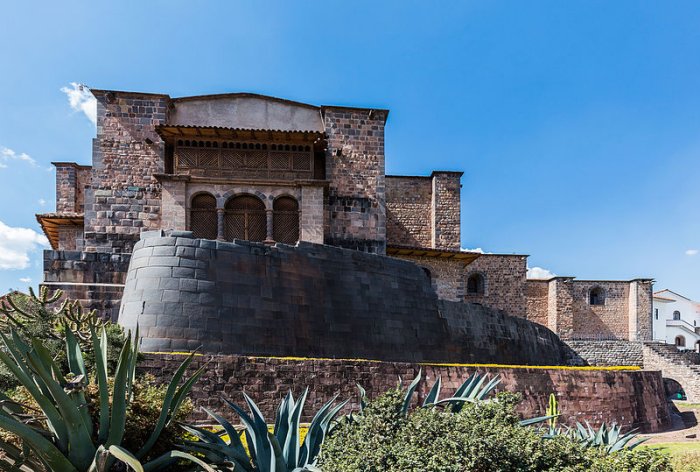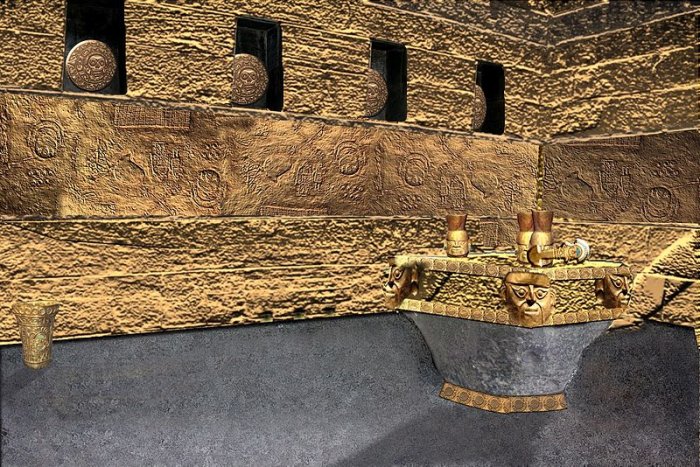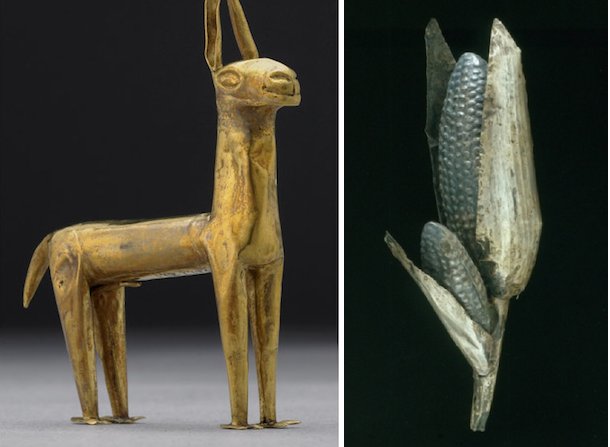Coricancha – Stunning Golden Garden And Lost Treasures Of The Inca
Ellen Lloyd - AncientPages.com - Today, there are only some ancient ruins left, but during the times of the Inca, Coricancha must have been a marvelous place to see. Coricancha was a garden of gold and silver where the Inca placed small, beautiful metal objects created in the image of plants, animals, and people.
Located in the Inca capital at Cuzco, Peru, the Coricancha (Qorikancha) complex contained the Temple of The Sun. It was dedicated to significant Inca deities such as the Creator God Viracocha, the Moon Goddess Quilla, and the Sun God Inti.
Coricancha, Cusco, Peru. Credit: Wikipedia
Myths and legends tell the Inca transported large quantities of gold to decorate the temples and their golden garden.
Qori" means goldwork, and its Spanish form is cori. "Kancha" represents an enclosed space bounded by walls. Hence, the name corresponds to approximately "place that has gold."
It is not entirely clear who constructed the Coricancha complex. The site is usually attributed to Pachacuti Inca Yupanqui, the 9th Inca ruler (1438-1471 CE). Still, Inca mythology reveals legendary Manco Capac built a temple at the site in the early 12th-century C.E, and archaeologists have unearthed pre-empire structures.
As previously mentioned in another article published on Ancient Pages, Manco Capac was the legendary founder of the Inca dynasty of Peru.
According to the Inca, Manco Capac emerged from one of the three openings in the mountain Tambotoco, near Pacaritambo (or Pacariqtambo) ('tavern of the dawn'), located some six leagues (approximately 33 km) to the south-southwest of Cuzco, Peru.
Even though his figure is mentioned in several chronicles, his existence remains unclear.
While he remains a semi-mythical figure whose actual period cannot be clearly pinpointed, he is regarded as an Inca hero. Many ancient legends connect Manco Cápac to the foundation of Cuzco.
The Lost Treasures Of Coricancha
The garden of the temple was dedicated to the great Sun God Inti. The Inca brought many offerings to their mighty deity; all garden objects were made of gold or silver.
A digital reconstruction of the room when it was filled with gold. Credit: Martinangel, Wikipedia
When the Spaniards entered Coricancha, they looted all Inca treasures and sent them to Spain.
Pedro de Cieza de León describes a golden garden in his 1554 account:
"In the month of October of the year of the Lord 1534, the Spaniards entered the city of Cuzco, head of the great empire of the Inkas, where their court was, as well as the solemn Temple of the Sun and their greatest marvels. The high priest abandoned the temple, where [the Spaniards] plundered the garden of gold and the sheep [llamas] and shepherds of this metal along with so much silver that it is unbelievable and precious stones, which, if they were collected, would be worth a city."
According to records from 1534, the Spanish king Charles V had a gold maize stalk with three leaves and two ears of corn in his collection. Royal inventories also describe gold and silver llamas, female figures, a lamb, and a male figure that is believed to have originated from Coricancha.
Left: Miniature gold llama figurine, Inka, 6.3 cm high, © Trustees of the British Museum. Right: Maize cobs, Inka, c. 1440–1533,(Ethnological Museum, Berlin)
To the Inca, who produced these small objects, the offering had much greater value than gold. The offerings had a symbolic meaning, and the miniatures of animals, plants, and figures acted as symbols of the Inca's supernatural origin in the Sun and their control over the natural world as descendants of the most powerful deity.
Today, almost nothing remains of the magnificent ancient Inca treasures except a few golden corn stalks.
The magnificent golden garden of the Inca is long gone, but fortunately, its history has not been forgotten.
If you are interested in lost Inca treasures, you may find the story of the Lost Golden Chain Of Huayna Capac intriguing.
Updated on March 24, 2024
Written by Ellen Lloyd – AncientPages.com
Copyright © AncientPages.com All rights reserved. This material may not be published, broadcast, rewritten or redistributed in whole or part without the express written permission of AncientPages.com
More From Ancient Pages
-
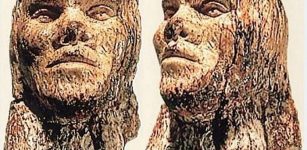 Incredible Mammoth Ivory Male Head From Dolni Vestonice, Czech Dated To 26,000 BC
Artifacts | Jun 23, 2015
Incredible Mammoth Ivory Male Head From Dolni Vestonice, Czech Dated To 26,000 BC
Artifacts | Jun 23, 2015 -
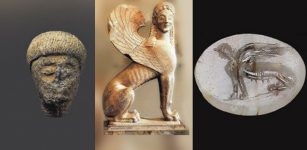 Rare Sphinx Seal Belonging To Roman Emperor Discovered In India Confirms Existence Of Legendary Muziris
Archaeology | Oct 1, 2020
Rare Sphinx Seal Belonging To Roman Emperor Discovered In India Confirms Existence Of Legendary Muziris
Archaeology | Oct 1, 2020 -
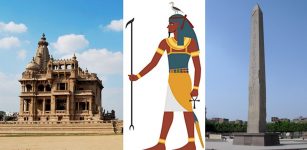 Geb – Egyptian God Of Earth And Member Of The Ennead – His Laughter Created Earthquakes
Egyptian Mythology | Feb 12, 2019
Geb – Egyptian God Of Earth And Member Of The Ennead – His Laughter Created Earthquakes
Egyptian Mythology | Feb 12, 2019 -
 On This Day In History: Unbelievable Flight Took Place – On Apr 28, 1939
News | Apr 28, 2016
On This Day In History: Unbelievable Flight Took Place – On Apr 28, 1939
News | Apr 28, 2016 -
 Mysterious Inca Citadel With Platforms, Passages And Walls Discovered In Peru’s Rainforest
Archaeology | Oct 15, 2017
Mysterious Inca Citadel With Platforms, Passages And Walls Discovered In Peru’s Rainforest
Archaeology | Oct 15, 2017 -
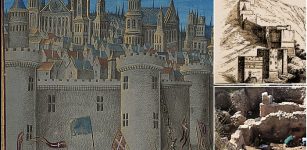 Late Roman-Era Rooms, Offering Vessels Unearthed At Ancient City Of Antiocheia, Southern Türkiye
Archaeology | Oct 31, 2022
Late Roman-Era Rooms, Offering Vessels Unearthed At Ancient City Of Antiocheia, Southern Türkiye
Archaeology | Oct 31, 2022 -
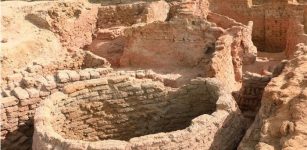 Administrative Centre Dated To 2181–2055 BC Unearthed In Kom Ombo, Upper Egypt
Archaeology | Mar 4, 2022
Administrative Centre Dated To 2181–2055 BC Unearthed In Kom Ombo, Upper Egypt
Archaeology | Mar 4, 2022 -
 Inventory Stela And Its Message: Controversy About This Artifact Still Remains
Artifacts | Jul 15, 2017
Inventory Stela And Its Message: Controversy About This Artifact Still Remains
Artifacts | Jul 15, 2017 -
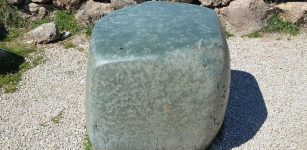 Mystery Of The Ancient Giant Wish Stone At Hattusa
Featured Stories | Oct 1, 2019
Mystery Of The Ancient Giant Wish Stone At Hattusa
Featured Stories | Oct 1, 2019 -
 Historic Shipwreck Margaret A. Muir Found In Lake Michigan, Wisconsin
Archaeology | Jul 29, 2024
Historic Shipwreck Margaret A. Muir Found In Lake Michigan, Wisconsin
Archaeology | Jul 29, 2024 -
 Mysterious Ancient Vanished Civilization With Unusual Physical Characteristics – Survivors Of The World’s First Race? – Part 1
Ancient Mysteries | Aug 17, 2020
Mysterious Ancient Vanished Civilization With Unusual Physical Characteristics – Survivors Of The World’s First Race? – Part 1
Ancient Mysteries | Aug 17, 2020 -
 Scottish Settler’s Ominous Encounter With A Mysterious Being In West Virginia
Featured Stories | Mar 18, 2024
Scottish Settler’s Ominous Encounter With A Mysterious Being In West Virginia
Featured Stories | Mar 18, 2024 -
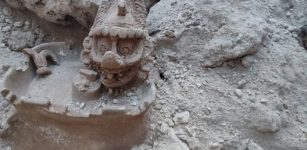 Unique Statue Of Mayan God K’awiil Associated With Lightning, Serpents, Fertility, Maize, Royal Lineage Found On Maya Train Route
Archaeology | May 17, 2023
Unique Statue Of Mayan God K’awiil Associated With Lightning, Serpents, Fertility, Maize, Royal Lineage Found On Maya Train Route
Archaeology | May 17, 2023 -
 Rare Iron- And Viking-Age Mortuary Houses Discovered In Norway
Archaeology | Aug 27, 2024
Rare Iron- And Viking-Age Mortuary Houses Discovered In Norway
Archaeology | Aug 27, 2024 -
 Mirpur Jain Temple: Stunning Artwork Of Ancient Craftsmen Of India
Featured Stories | May 17, 2021
Mirpur Jain Temple: Stunning Artwork Of Ancient Craftsmen Of India
Featured Stories | May 17, 2021 -
 Brief History Of Abortion – From Ancient Egyptian Herbs To Fighting Stigma Today
Featured Stories | Oct 3, 2023
Brief History Of Abortion – From Ancient Egyptian Herbs To Fighting Stigma Today
Featured Stories | Oct 3, 2023 -
 How And When Did Ancient People Start Using Oil?
Ancient History Facts | Jun 28, 2018
How And When Did Ancient People Start Using Oil?
Ancient History Facts | Jun 28, 2018 -
 On This Day In History: Parachute Jump From 1,000 m Above Paris Is Recorded – On Oct 22, 1797
News | Oct 22, 2016
On This Day In History: Parachute Jump From 1,000 m Above Paris Is Recorded – On Oct 22, 1797
News | Oct 22, 2016 -
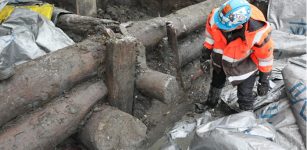 Why Did Archaeologists Destroy Medieval King’s Wharf After Excavations?
Archaeology | May 17, 2023
Why Did Archaeologists Destroy Medieval King’s Wharf After Excavations?
Archaeology | May 17, 2023 -
 Tombstone With Ancient Greek Inscription Unearthed Near Nitzana In The Negev, Israel
Archaeology | Jan 8, 2021
Tombstone With Ancient Greek Inscription Unearthed Near Nitzana In The Negev, Israel
Archaeology | Jan 8, 2021

